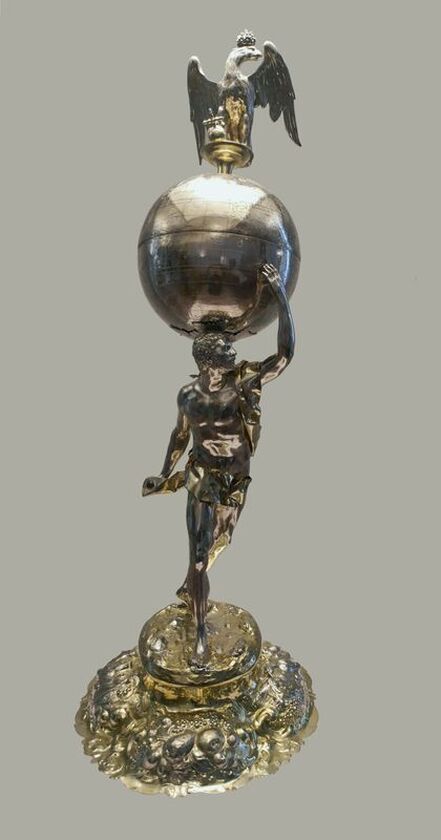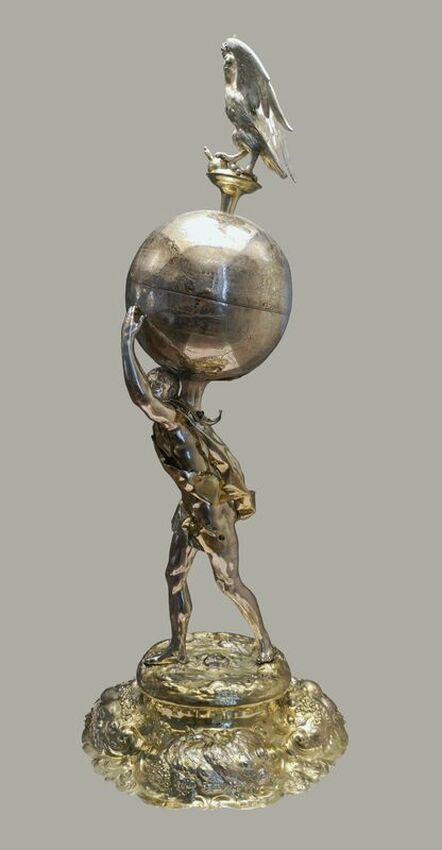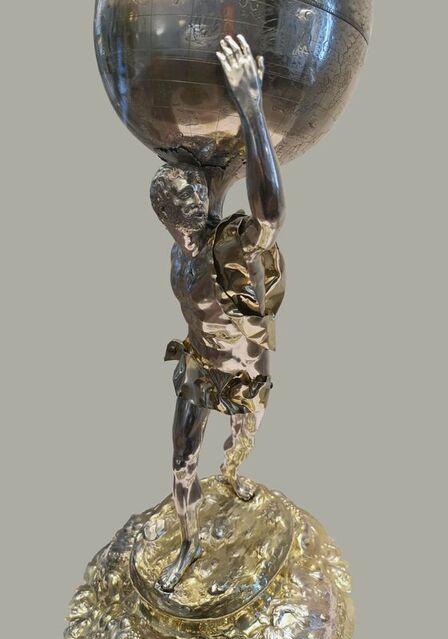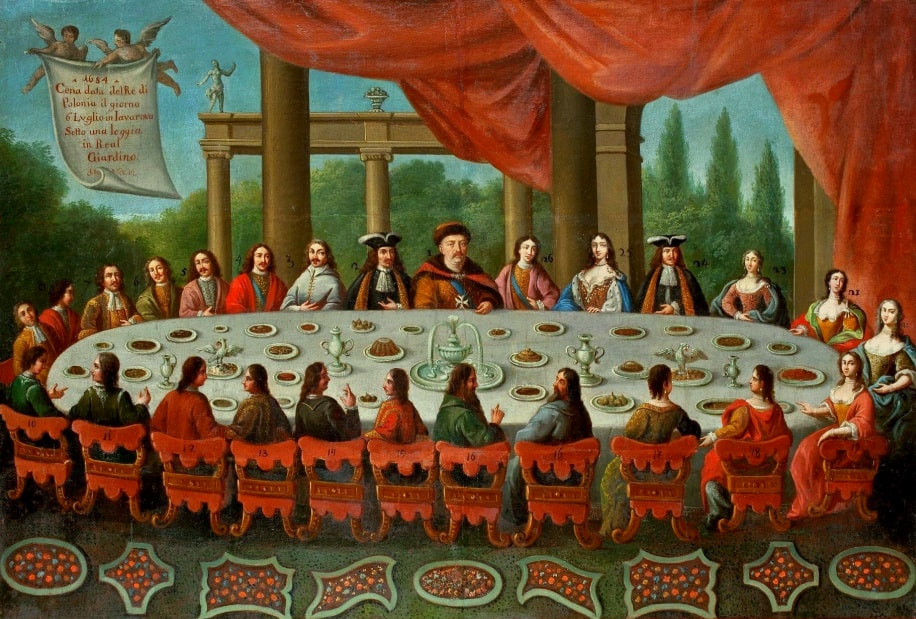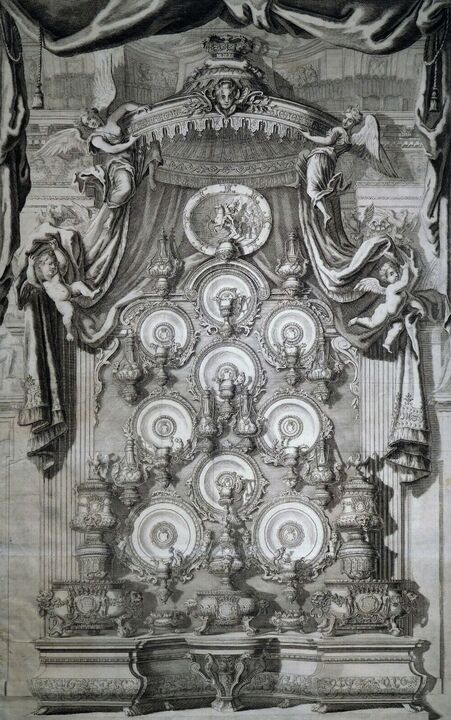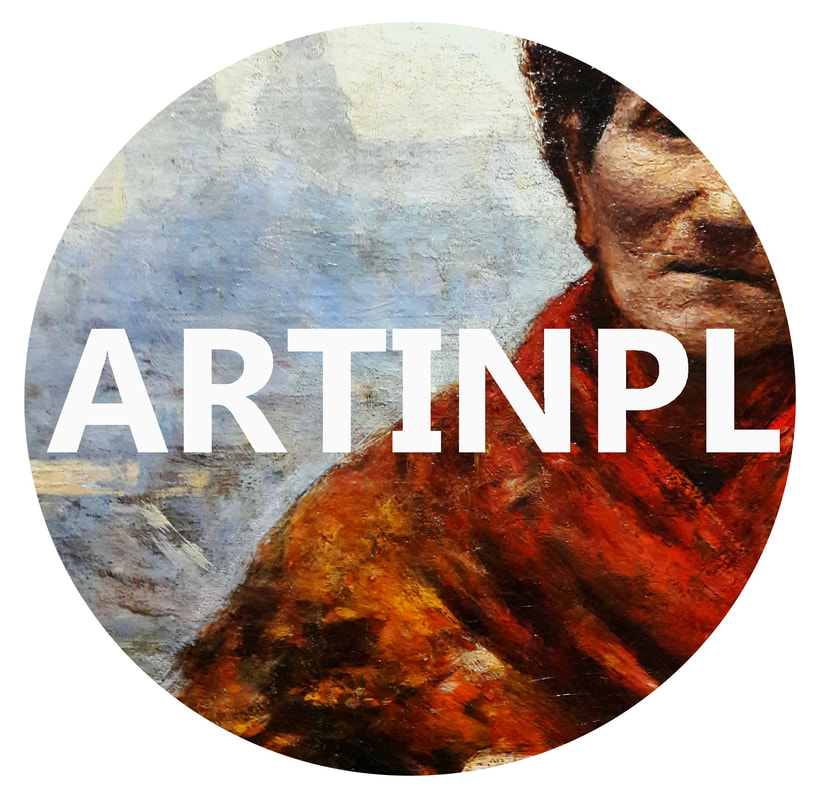|
On June 17th, 1696 died in the Wilanów Palace in Warsaw after 20 years reign, John III Sobieski, elected monarch of the Polish-Lithuanian Commonwealth. Shortly after king’s death an inventory of his belongings in the palace was opened. The document contains 122 positions of exquisite silverware, some of which could be created for 20th anniversary of king’s coronation on February 20th, 1696. In the part of royal treasury supervised by burgrave Brochocki, there was "a silver pyramid with 11 baskets made in Augsburg (No. 9.)", "a silver bowl made in Augsburg with a cover with phoenix (No. 4.)", "a three storey fountain with gilded elements made in Augsburg (No. 8.)" and "partially gilded service made in Augsburg with salt cellars, trays, vinegar cruets, bowls and Hercules in the center (No. 7.)". According to inventory the latter service had total weight of 56 grzywnas and 12 łuty, while the Kraków grzywna, used in Poland after 1650 weighed 201.86 g, therefore total weight of the service was approximately 11,304.16 g. Similar vessel from the Green Vault in Dresden (inventory number IV 292), created in 1617 in Nuremberg by Heinrich Mack and Johann Hauer, meaure 75 cm with 4686 g weight.
The inventory also lists some gifts from foreign monarchs including gold bowl offered by Elector of Brandenburg (till 1657 a fief of the Commonwealth as Duke of Prussia) - “gold bowl in the shape of a shell presented by Elector of Brandenburg with his coat of arms” 894 red zlotys worth, inherited by prince Aleksander Benedykt Sobieski. On March 24th, 1712 arrived to Berlin, a capital of newly created Kingdom of Prussia (earlier Brandenburg), an envoy of the Polish-Lithuanian Commonwealth and Saxony, count Jacob Heinrich von Flemming. His mission was to negotiate alliance against Sweden (diplomatic credentials for Flemming, Dresden March 17, 1712 [O. S. A. Rep. XI: 247 ii Fe. 55]). Both Prussia and Sweden, growing military powers in the region, pose a significant threat to the Commonwealth. Prussia claimed Courland, a vassal Duchy of the Commonwealth, Varmia and Elbląg, while Swedes were even more perilous for elected successor of John III Sobieski, Augustus II the Saxon, called the Strong, as they supported Stanislaus Leszczyński, a candidate to Commonwealth’s crown and Augustus’ rival. The king was prepared to make far-going territorial concessions to alleviate Prussia and the envoy undoubtedly has not arrived barehanded. It is possible then that Augustus has sent from Warsaw a part or whole silver service made for Sobieski, as a gift. Table centerpiece with Hercules carrying the terrestrial globe and royal eagle in the Köpenick Palace, a branch of Museum of Decorative Arts in Berlin (inventory number S 559), is probably the largest and the only preserved part of the mentioned service. It measures 80 cm and bears hallmark of the city of Augsburg as well as master mark LB with a star. Stylistically the work should be attributed to Lorenz II Biller (active between 1678-1726) and dated to 1680s. The work was signed in the center of the celestial globe in Latin: Christoph Schmidt fecit Augustae 1696. Schmidt most probably modified the work by Biller’s workshop, acquired by some important patron that year, John III Sobieski. The statue also bears the date: 17 M 12 [March 1712?] at the bottom of the base on the right, possibly an inventory date. Later the centerpiece was included in the so-called great silver buffet in the Berlin City Castle. Two similar vessels are visible in the drawing from the end of the 18th century, depicting the composition of the silver buffet in about 1763 and are not visible in original composition of the buffet by Johann Friedrich Eosander from 1708. The centerpiece was therefore included in the composition between 1708 and 1763, which makes Polish provenience even more accurate.
Table centerpiece with Hercules carrying the terrestrial globe and royal eagle by Lorenz Biller II and Christoph Schmidt in Augsburg, ca. 1685 and 1696, Museum of Decorative Arts in Berlin.
Fragment of table centerpiece with Hercules carrying the terrestrial globe and royal eagle by Lorenz Biller II and Christoph Schmidt in Augsburg, ca. 1685 and 1696, Museum of Decorative Arts in Berlin.
Banquet given by John III Sobieski to foreign diplomats and Polish dignitaries at Jaworów on 6 July 1684 by Frans Geffels, ca. 1685, National Museum in Wrocław.
Silver buffet in the Berlin City Castle by Martin Engelbrecht, circa 1708, engraving published in Theatrum Europaeum, Volume XVI, 1717, private collection.
See the work in Polish-Lithuanian Treasures.
Comments are closed.
|
Artinpl is individual, educational project to share knowledge about works of art nowadays and in the past in Poland.
If you like this project, please support it with any amount so it could develop. © Marcin Latka Categories
All
Archives
April 2023
|
